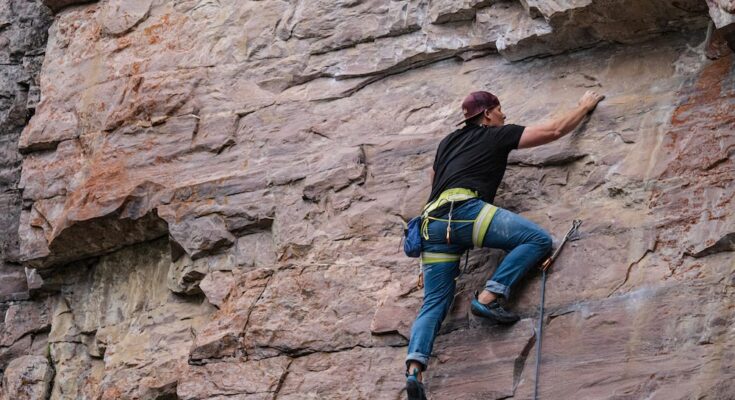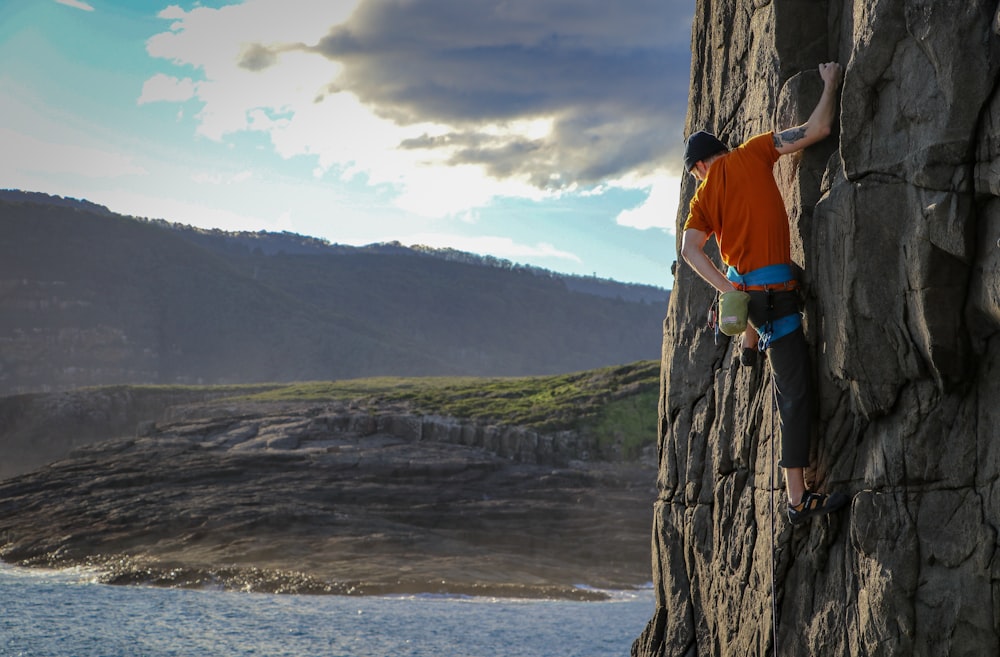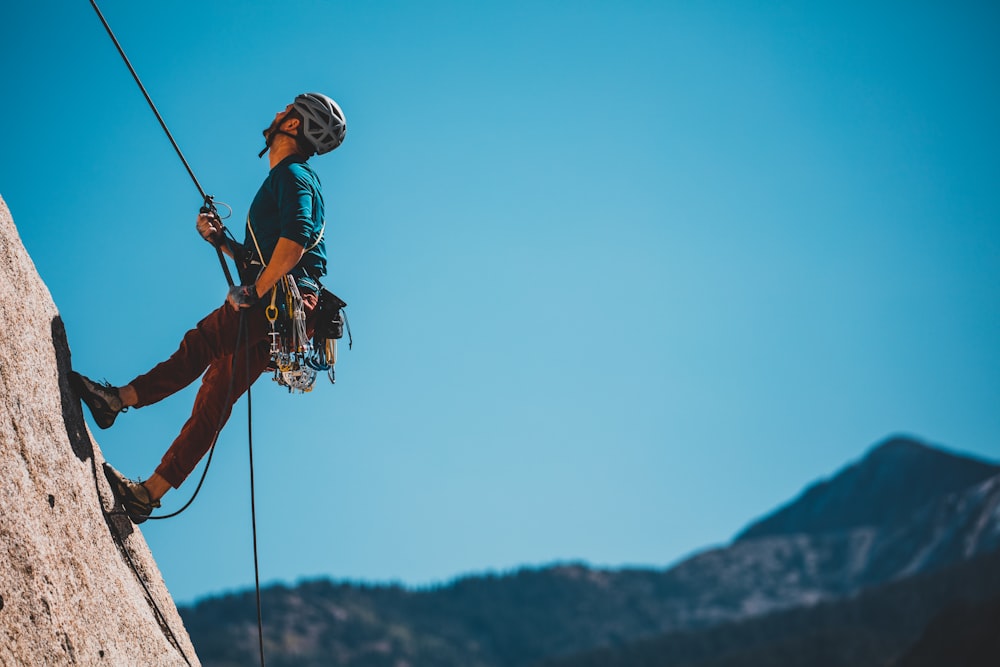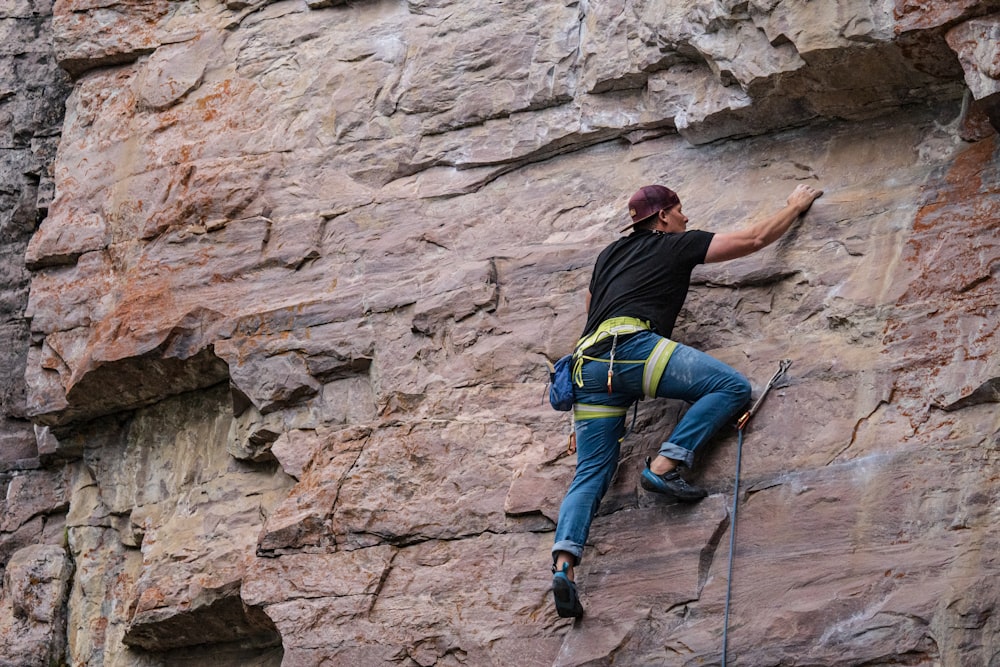Abseiling: Rock-Climbing Tips to Start With
Climbing natural or artificial rock structures, such as walls, is the sport of abseiling. It puts a climber’s strength, endurance, agility, and balance to the test and is psychologically and physically taxing. In spite of this, anyone can begin rock climbing regardless of prior experience.
Visit a Bouldering gym: abseiling tips
Image via Unsplash.com
Visit a rock or bouldering gym to acquire fundamental skills and safety in a safe manner. You can boulder outside as well, but before you step onto a rock, you should research safe, well-known bouldering locations. Furthermore, outdoor locations are typically more challenging, requiring guidance and a greater understanding of rock formations. Rock gyms are well-designed, secure areas that cater to a range of skill levels. They frequently offer personnel and classes to aid in learning.
Bouldering routes are quick rock-climbing challenges without the need for ropes or harnesses. They’re an excellent method to develop your climbing abilities safely without having to learn complicated belaying or equipment techniques. Certain limitations associated with roped climbing are circumvented because these challenges don’t require ropes. Bouldering routes are enjoyable and an excellent method to learn to climb, but they don’t offer the same level of safety as roped routes.
Snug shoes and chalk bag: abseiling tips
Snug shoes are essential for rock climbing in order to feel the precise edges of the rock. Since the toes are frequently pointed to help you stay on little chips and edges, they could feel awkward at first, but you’ll get used to them quickly. Just watch out that they don’t stop the flow of blood.
Wearing shoes, a size smaller than your typical shoe size is usual. Though they are not required, chalk bags are meant to keep your hands dry, which is important for gripping the rock as you become tired. To lightly dust your hands with chalk, just dip your fingers into the material and clap them together.
Climb to the top of ball
Image via Unsplash.com
Routes, or distinct groups of rocks that you must follow to reach the top, are typically used to identify walls. Even if these are more difficult and enjoyable for specialists, you must first become accustomed to the height, the grips, and the whole experience of climbing. Ignore the tape marks and focus on your form fundamentals as you make your way up the wall. When you feel confident enough to climb, you can begin taking on some beginner routes.
For top-roping, start by looking for routes with the good beginner ratings of 5.4 or 5.5, or for bouldering, V0 or V1. Fontainebleau grades are widely used in Europe. These grades begin at 2a and increase by one number for every “c” grade.)
Pushing your legs: abseiling tips
The most important and challenging rule for excellent climbing is this one. Your fingers feel more securely latched onto the holds, so it feels natural to move your body up the wall. However, your legs are made of considerably stronger muscle, thus attempting ten pull-ups in a row will wear you out halfway up the wall. Here are a few tried-and-true methods to help you become used to using your legs:
Hold out your arms. Lean your knees for strength and let your weight hang low while holding onto the handholds alone for balance.
Planning your moves and position
Image via Unsplash.com
You don’t have to transform into Mr. Fantastic to grasp a handhold if you’re having trouble reaching it with your left hand. To extend your left side and facilitate the reach, you must raise your left foot. Gaining momentum up a wall by force is not a good strategy for climbing, which is a deliberate and thoughtful activity. Take a moment to consider the best path up a route or consult with more seasoned climbers.
It’s never too early to start honing the crucial ability of reading a route from the ground up, which involves anticipating where your hands and feet will go.
You’ll get more exhausted the longer you clutch the wall, not knowing where to go.
Resting points to relax: abseiling tips
There are one or two places along most routes where you can take a breather and relax your muscles. Anywhere you can stand comfortably and support the majority of your weight on your feet is a wonderful place to relax. To obtain chalk and stretch, you should be able to remove one arm off the wall without discomfort. While you’re sleeping, make plans for your future steps. Make a mental note of the footholds that are approaching and decide which limb to use. Seek guidance from someone at the bottom if necessary.
Chalk your hands again. On rocks, chalk wears off, so grab some extra.
Moving up the wall
Image via Unsplash.com
These are sophisticated moves for later in your career that call for quick reflexes, quick speed, and even tiny leaps (called “dynos”). Right now, you should concentrate on fluid mobility. Moving your body after concentrating on each limb is the optimal method for achieving this. Often referred to as “static climbing technique,” you shift your body into the new position after moving each limb to get set. Imagine yourself climbing the wall like a slinky, coiling and uncoiling.
Building climbing muscles: abseiling tips
The fact that novice climbers become weak after just one or two runs is one of their largest obstacles. You won’t feel like you can even hold on to the wall because your forearms and fingers will be blistering and aching. But this makes sense—you don’t normally use your forearms to this extent in daily life. But you’ll rapidly get over this hump and be able to concentrate on your climbing technique rather than how sore your arms are if you climb a few routes two or three times a week.
Learning to tie and belay
Image via Unsplash.com
Although belaying is not a tough procedure, it is necessary if you take climbing seriously. To belay someone, you must typically pass a supervised test at most climbing gyms. Typically, they provide short, free courses in addition to classes. Always get belaying practice from a qualified professional. Regardless of your level of experience, you should know how to tie into your rope even if belaying requires in-person instruction.









